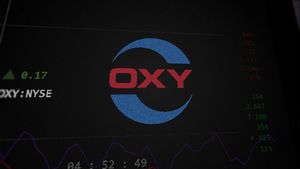
Hawaiian banking company First Hawaiian (NASDAQ: FHB) reported revenue ahead of Wall Street’s expectations in Q1 CY2025, with sales up 2.5% year on year to $211 million. Its non-GAAP profit of $0.47 per share was in line with analysts’ consensus estimates.
Is now the time to buy FHB? Find out in our full research report (it’s free).
First Hawaiian Bank (FHB) Q1 CY2025 Highlights:
- Revenue: $211 million vs analyst estimates of $209.7 million (2.5% year-on-year growth, 0.6% beat)
- Adjusted EPS: $0.47 vs analyst estimates of $0.46 (in line)
- Market Capitalization: $3.02 billion
StockStory’s Take
First Hawaiian’s first quarter results saw stable performance, with management attributing revenue growth to disciplined deposit cost management and effective repositioning of the investment portfolio. CEO Bob Harrison noted that net interest income benefited from a decline in deposit costs and continued healthy credit quality. The bank’s retail deposit growth offset fluctuations in commercial accounts, and asset quality metrics remained strong, with classified assets and net charge-offs both low. Management acknowledged increased macroeconomic uncertainty but emphasized that credit performance was in line with expectations. Harrison also highlighted, “We continue to be well capitalized with ample liquidity.”
Looking forward, First Hawaiian’s leadership anticipates ongoing uncertainty in the economic environment, particularly due to questions around tariffs, visitor arrivals, and consumer confidence. CFO Jamie Moses stated that while the underlying balance sheet dynamics supporting net interest margin remain intact, the ability to further reduce deposit costs is limited outside of upcoming certificate of deposit repricings. The company expects loan growth opportunities depending on broader economic conditions, but management is cautious about the timing and impact of potential rate cuts and changing customer behaviors. As Harrison put it, “There’s more uncertainty in the market…we certainly can’t tell what’s going to happen in the back half of the year.”
Key Insights from Management’s Remarks
Management attributed the quarter’s results to lower deposit costs, steady loan demand, and conservative credit practices, while highlighting increased uncertainty from external economic factors.
- Retail deposit growth: The bank saw a notable increase in retail deposits, which management credited to strong performance from branch teams and deeper customer relationships. This growth helped offset declines in commercial deposit balances, which management described as normal fluctuations among large accounts rather than a sign of broader weakness.
- Deposit cost management: CFO Jamie Moses highlighted the benefit from lower deposit costs, driven by both the pricing in of prior rate cuts and the ongoing repricing of certificates of deposit (CDs). Management acknowledged that further reductions in deposit costs may be limited, except for remaining CD repricings later in the year.
- Loan portfolio trends: Total loans declined modestly, mainly due to scheduled and early payoffs in commercial real estate and typical seasonal reductions in dealer floor plan balances. However, management emphasized a healthy loan pipeline and expressed optimism about potential loan growth, subject to economic conditions and uncertainty around tariffs.
- Expense discipline: Operating expenses were well controlled in the quarter, coming in below expectations. Management reiterated its commitment to balancing investment in technology and staff with overall expense guidance for the year, noting that large-scale tech investments have tapered off following prior years of elevated spend.
- Credit quality resilience: Chief Risk Officer Lea Nakamura reported that credit risk remains stable and within expectations, with low levels of nonperforming assets and net charge-offs. The bank increased its allowance for credit losses due to a more cautious economic outlook, but has not observed broad signs of credit deterioration across its portfolios.
Drivers of Future Performance
First Hawaiian’s outlook is shaped by sustained margin discipline, the pace of loan growth, and the potential impact of external economic headwinds.
- Limited deposit cost flexibility: Management expects that most of the benefit from deposit repricing has already been realized, with remaining opportunities largely tied to upcoming CD maturities. This may limit further margin expansion unless market interest rates decline more than anticipated.
- Loan growth tied to economic outlook: While there is a healthy pipeline of potential loans, actual growth depends on economic conditions, including the effects of tariffs on local businesses and ongoing uncertainty in both the tourism and construction sectors. Management maintained a cautious stance, stating that loan growth could reach low- to mid-single digits for the year if conditions remain supportive.
- Expense and credit vigilance: The company plans to keep expenses within guidance while being prepared to invest in targeted projects if warranted by the economic outlook. Credit risk teams are closely monitoring portfolios potentially sensitive to tariffs and supply chain disruptions, especially among commercial borrowers in affected industries.
Catalysts in Upcoming Quarters
In the coming quarters, our analysts will be closely watching (1) whether loan growth rebounds as expected, particularly in commercial and consumer sectors; (2) the impact of upcoming CD repricings and any further movement in deposit costs on net interest margin; and (3) how external factors like tariffs and tourism trends affect local economic activity and credit quality. The pace and effectiveness of targeted investments in technology and customer service will also be key to tracking ongoing competitiveness.
First Hawaiian Bank currently trades at $24.05, up from $23.30 just before the earnings. In the wake of this quarter, is it a buy or sell? See for yourself in our full research report (it’s free).
Stocks That Trumped Tariffs
Market indices reached historic highs following Donald Trump’s presidential victory in November 2024, but the outlook for 2025 is clouded by new trade policies that could impact business confidence and growth.
While this has caused many investors to adopt a "fearful" wait-and-see approach, we’re leaning into our best ideas that can grow regardless of the political or macroeconomic climate. Take advantage of Mr. Market by checking out our Top 9 Market-Beating Stocks. This is a curated list of our High Quality stocks that have generated a market-beating return of 183% over the last five years (as of March 31st 2025).
Stocks that made our list in 2020 include now familiar names such as Nvidia (+1,545% between March 2020 and March 2025) as well as under-the-radar businesses like the once-micro-cap company Kadant (+351% five-year return). Find your next big winner with StockStory today.





